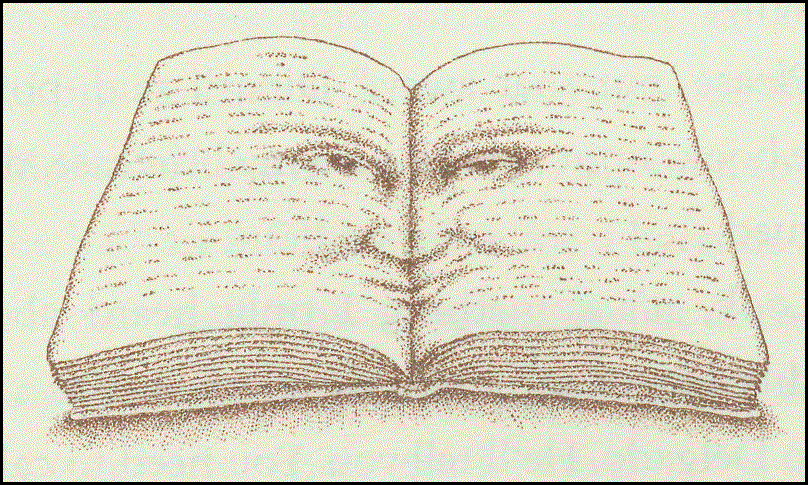
The House
Of Paper
Carlos Marķa Domínguez
Nick Caistor,
Translator
(Harcourt)

Book people can be maddening, especially when they are writing books about writing books, or writing about reading books, or --- worst of all --- writing books about reading books while writing and/or reading them.We have, for instance, in the past, tangled with Alberto Manguel who does go on about the wonders of his life in books. Indeed, we wrote such a sneery take on his History of Reading that we got fired from a job of book-reviewing for a major but as of this writing unnamed daily major market newspaper. (It all happened a dozen or more years ago, and we hope he has forgiven us for calling him a "noisy show-off" who "writes fat, portentous books about reading." Even though he still is and does.)
Anyway, House of Paper is about people who read and collect and at times write books about reading, writing, and collecting books. What saves it from being pretentious if not portentous is that it is a hell of a story. Soon enough you forget that Domínguez is dropping all those literary names like Manguel did --- Conrad, Goethe, Baudelaire, Huidobro, the Comde de Siruela, Marosa di Giorgio and Pallière. It doesn't irritate because the character who is doing this is, at the same time, telling us about a man named Brauer who is a book-collecting fool, and nuts: "Carlos enjoyed reading nineteenth-century French authors by candlelight," we are told, "in this case provided by a silver candelabra." One of his friends saw Carlos with twenty or so books laid out on his bed
in such a way that they reproduced the mass and outline of a human body. He swears he could see the head, surrounded by small red-backed books, the body, the shape of arms and legs.
The man describing such weirdness then gets a little weird on his own. He opines that a book's printed page "can be a complicated drawing."
It's a play of lines and tiny figures that flows from vowel to consonant, obeying its own laws of rhythm and composition, all based on the type size, the chosen font, the depth of the margins, the thickness of the paper, folios on the right or in the center, the infinite tiny details that go to create a beautiful object.
He is so convincing that when he hands our narrator a copy of Eugénie Grandet,
I could see long pathways that led from line to line, crossed paragraphs, occasionally came to a halt, then branched off diagonally, from right to left or left to right, or cascaded vertically down.
In other words, the printed page turns into a work of art, and the printed page turns the characters in The House of Paper into genuine looneycakes.
Such that when Carlos by mistake burns up the index to his 20,000 book collection with his candelabra, he is done for: "the books now owned him ... he was a martyr to volumes." Most people run away from home to get away from family, husband, wife. Carlos heads off to the deserted Uruguayan village of La Rocha because he lost his index. Using his books and a bit of cement he builds a cottage on the shore builds a whole house with his rare collection of books. [Emphasis mine.] This is book-love with a vengeance.
This whole plot-line gambol starts out with Carlos sending a literary lady a heavily cemented copy of Joseph Conrad's The Shadow-Line. I was going to Google the book and see if I could figure out why, in a books about books and book-lunatics, the author had planted this particular title. It must be significant, n'est-çe-pas?
I think I won't bother. Looking up the Conrad reference, I mean. Domínguez --- like Nabokov, Marías, Smollett, Joyce, Barth and Amantea --- is very fond of playing literary tricks. I could come up with a dozen or so guesses, and I suspect they would all be right.
--- Lolita LarkBook illustration by Peter SísGo to a
reading
from this book